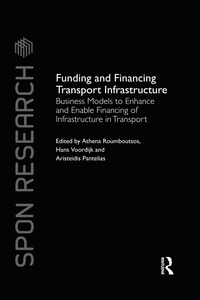

The complexity and uniqueness of the federal government makes it difficult to conduct a meaningful analysis of its financial condition. However, conducting a financial statement analysis does provide a better understanding of the federal government. To assist in the financial statement analysis, use Illustration 17-2 and Illustration 173 along with the following excerpts from the 2016 Financial Report of the United States Government. (Hint: When using revenues or net costs, use the consolidated amounts, which are adjusted for Intra- entity activity.) UNITED STATES GOVERNMENT Statements of Changes in Cash Balance from Unified Budget and Other Activities For the Years Ended September 30, 2016, and 2015 (In billions of dollars) Reclass 2016 2015 3,266.7 (3,854.1) (587.4) 3,248.7 (3,687.6) (438.9) 264.1 (12.7) 11.8 263.2 245.4 26.8 (22.2) 250.2 (262.7) (80.3) (11.6) (10.2) 1.6 (0.7) (243.5) (119.9) 17.4 9.8 (0.3) 20.5 Cash flow from unified budget activities Total unified budgetary receipts Total unified budgetary outlays Unified budget deficit Adjustments for non-cash outlays included in the unified budget Interest accrued on Treasury securities held by the public Agencies year-end credit reform subsidy re-estimates Subsidy expense accrued under direct loan & guarantee programs Subtotal - adjustments for non-cash transactions in unified budget Cash flow from activities not included in unified budget Cash flow from non-budget activities Interest paid on Treasury securities held by the public Other direct loan transactions Repayment of principal on direct loans Other guaranteed loan transactions Miscellaneous liabilities Deposit fund liability balances Seignorage Subtotal - cash flow from non-budget activities Cash flow from monetary transactions Loans to the IMF Other monetary assets Special drawing rights Subtotal - cash flow from monetary transactions Cash flow from financing Borrowing from the public Repayment of debt held by the public Effect of uninvested principal from the Thrift Savings Plan (TSP) G Fund Agency securities Subtotal - cash flow from financing Other Change in cash balance Beginning cash balance Ending cash balance (363.3) (315.4) 3.0 0.9 1.9 (@.3) 2.5 (2.9) 8,398.4 (7,343.3) (203.2) 0.1 844.0 0.5 159.5 395.1 7,037.5 (6,780.6) 203.2 0.1 540.2 3.4 40.2 264.9 395.1 464.6 Property, plant, and Equipment As of September 30, 2016 (In billions of dollars) Cost Defense 384.1 1,054.5 118.1 10.7 9.5 Buildings, structures, and facilities Furniture, fixtures, and equipment Construction in progress Land Internal use software Assets under capital lease Leasehold improvements Other property, plant, and equipment Subtotal Total property, plant, and equipment, net All Others 275.3 172.7 46.5 13.2 33.1 4.1 19.4 10.8 Accumulated Depreciation/ Amortization All Defense Others 230.1 158.8 639.7 113.3 N/A N/A N/A N/A 6.2 20.2 0.2 1.7 0.3 6.3 5.5 876.3 298.3 Net All Defense Others 154. 124.5 414.8 59.4 118.1 46.5 10.7 13.0 3.5 12.4 0.2 2.4 4.1 10.3 5.3 711.9 267.6 10.3 1,588.2 565.9 2,154.1 1,174.6 979.5 Required a. To provide an Indication of the government's financial capability, answer the following: (1) What percentage of total revenues comes from Individual income taxes and withholdings? (2) What is the debt service as calculated by the ratio of principal and Interest payments on debt held by the public to total revenue? b. To provide an indication of the government's financial performance, answer the following: (1) What Is Interperlod equity, as calculated by the ratio of revenue to net costs? c. To provide an indication of the government's financial position, answer the following: (1) What is the ratio of nondedicated collections funds to total revenue? (2) What is the quick ratio (use known current liabilities in the calculation)? (3) What is the capital asset condition as calculated by the ratio of accumulated depreciation to the cost of depreciable capital assets








